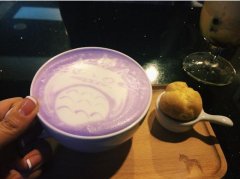Processing method of single bean in Shaqisuo producing area information planting distribution in producing area

For professional baristas, please follow the coffee workshop (Wechat official account cafe_style)
In view of the disadvantages of the traditional solarization method, the water washing method comes along with it. Use a peeling machine to separate most of the pulp from the coffee beans, then guide the shelled beans to a clean sink, soak them in water and ferment to completely remove the residual pulp layer. In the past (about five years ago), washing was often the first choice for good coffee bean treatment. Through water treatment, unripe beans and defective beans are selected because of buoyancy, and the fermentation process is easier to control, so the flavor is not mixed like sun beans, but shows obvious acidity, complexity and cleaner (without any negative flavor, such as astringency or sharpness). But it is also because it is too "clean" and the richness of the flavor is a little weaker.
The reason why the Guji producing area can stand out and become a new bright spot in the eyes of boutique coffee fans, in addition to its own geographical advantages, high-quality farmers and changes in the division of ECX, the micro-producing area of Shakisso (sometimes translated as Shakiso) also plays an important role. Shaquiso's coffee belongs to the Guji producing area, and the flavor is of course quite unique. Coffee Review won a brilliant score of 95 points in April 2014, which has already attracted the attention of the market to further enhance the potential of the market. It is no exaggeration to say that Gu Ji is a rising star of Ethiopian coffee.
Ethopia Ethiopia
Population: 93877000
The name of the producing area of Ethiopia is the most recognized in the coffee industry, and it is currently the country with the highest number of coffee names as the name of the producing area. This is the case today, and the future is foreseeable. In addition, the Arabica genetic potential of the original species and wild species will also be a major advantage of Ethiopian coffee.
SIDAMO
Hidamo and two other regions, ─ Hara and Yegashev, were approved by the Ethiopian government to register their trademarks in 2004, making the region's reputation and local coffee beans more recognizable. Hidamo's mixed use of water washing and sun treatment is popular among consumers who like fruit and strong aromas. After Italy withdrew from Ethiopia in 1942, locals called themselves Sidama. Therefore, Sidamo or Sidama is the general name of coffee beans in this area. Some high-quality coffee beans from Ethiopia are also grown in this area.
Altitude: 1400-2200m
Harvest: October-January
Variety: Heirloom
LIMU
Even without the reputation of Hidamo and Yegashev, Lim still produces amazing coffee. Most of the areas are small farmers, but there are also some large estates belonging to the government.
Altitude: 1400-2200m
Harvest: November-January
Variety: Heirloom
HARRAR
This area is the town around Hara and is the oldest production area. Coffee in this area is so special that it is not in an environment that requires additional irrigation. Hara enjoys a high reputation over the years, although the sun treatment can adjust the original turbid, woody soil flavor to a bright blueberry flavor. Coffee beans are so special and memorable that people who have worked in this coffee industry have opened their eyes to the diversity of bean flavors.
Altitude: 1500-2100m
Harvest: November-February
Variety: Heirloom
Ethiopia Natural Guji Shakisso G1
Ethiopian Sun Valley Giachajiso G1
Country Ethiopia (Ethiopia)
Guji Zone, Shakisso woreda in producing area
Local regional small-scale farmers
Treatment Solar treatment (Natural)
Variety original Ethiopian species (Heirloom)
1800-2000 meters above sea level
Dark soil and red clay
Packing specification bulk 5KG vacuum packing, whole gunny bag 30KG packing
Flavor essay: passion fruit and blueberry jam, ripe tropical fruit, cherry chocolate cake, Body thick, sweet.
The administrative region of Ethiopia is divided into four grades, the order from big to small is Region, Zone, woreda and kebele. Most of the names of raw coffee beans follow this rule. Guji-Shaquiso, which is located in the southeast of Yejia Sheffield, a well-known producing area, belongs to Oromia Region → Guji Zone → Shakisso woreda, belonging to the regional source of coffee beans.
Just like Yejia Xuefei became well-known after becoming famous, so it became an independent producing area. Guji became an independent production area by ECX in 2010 because of its superior geographical location and cup flavor. Shakisso (sometimes translated as Shakiso) is the most attractive micro-producing area in the Guji producing area, which is located in the southeast of Yejia Shifei, with an average altitude of more than 1800 meters, fertile black soil (Vertisol), and a significant temperature difference between day and night, so that the local has all kinds of local conditions to produce high-quality boutique coffee. Almost all the sources of local coffee production belong to the form of individual small farmers. At the arrival of the production season, the ripe red transparent berries from their neighbors are picked and sent to the treatment plant, and placed on a well-ventilated African scaffolding to control the temperature and fermentation degree. After the pulp is removed, the water content is reduced to between 11.5% and 12%. When the post-processing and static operation are completed, the export is done through the competitive bidding system of the ECX Ethiopia Commodity Exchange. Local exporters or international buyers follow this system to find their favorite raw coffee beans.
In recent years, the most eye-catching producing area in Ethiopia is Yejia Sheffield. Guji-Shakisuo is less well-known than Yejia Sheffield, but under the trend of soaring overall prices in 2015, international boutique buyers are looking for other neighboring producing areas, such as Sidamo, Limu, Jimma … Wait, wait,
Guji-Shaquiso coffee is actually quite unique, and the coffee produced has also repeatedly attracted market attention. Ninty Plus launched the legendary bean Nekisse at the end of 2009, which originally means "nectar from Shaquiso" (Nectar from Shakisso). The origin and naming come from Shakisso. Another Level Up-produced Derar Ela, which is also produced in Shaquiso, was repeatedly praised by Taiwan businessmen last year, and won an excellent score of 95 Coffee Review points in April 2014.
Sidama is located in southern Ethiopia. The landscape of this area is so varied that each town has its own unique and diversified coffee flavor. Shakisso is located in Guji, Morri, Xida.
(Guji) production area, located in the southeast of Yejia Sheffei, with an average altitude of more than 1800 meters, has fertile black soil and a significant temperature difference between day and night, so that the local has all kinds of local conditions for producing high-quality coffee. Guji − Shakiso's coffee is quite unique, and its coffee has repeatedly won market attention, and scored a high score of 94 in the 2016 Coffee Review coffee evaluation.
Producing area: Sidamo / Guji / Shakisso
□ altitude: 1850 Murray 2000 meters
□ varieties: native species.
□ treatment: traditional washing
□ level: ECX G1
□ flavor description: cantaloupe, cocoa, lemon, citrus, balanced Earl tea, light flower aroma.
□ Ethiopia District is divided into four grades, the order from large to small is Region, Zone, woreda, kebele. Most of the names of raw coffee beans follow this rule. This Guji / Shaquiso is located in the southeast of the well-known producing area of Yejia Sheffield. It belongs to Oromia Region/Guji Zone/Shakisso woreda in administrative division and belongs to regional coffee producing areas. Just as Yejia Xuefei became an independent producing area after it became famous, Guji became an independent producing area by ECX in 2010 because of its superior geographical location and measured flavor. Shakisso (sometimes translated as Shakiso) is the micro-producing area that attracts the most attention of the international coffee market in the Guji producing area, with an average altitude of more than 1800 meters, fertile black soil (Vertisol), and a significant temperature difference between day and night, so that the local has the local conditions to produce high-quality coffee. Almost all the sources of local coffee production belong to the form of individual small farmers. With the arrival of the production season, picking their own fully ripe red berries and sending them to the local regional processing plant to complete the post-processing operation, and then through the competitive bidding system of the ECX Ethiopia Commodity Exchange for export process.
In recent years, in addition to Yejia Sheffei, which has been favored for a long time, many potential producing areas have been discovered, and international boutique coffee buyers have turned to other producing areas, such as Sidamo,Limu,Jimma. Wait. As the coffee produced by Guji / Shaquiso does have remarkable uniqueness, it naturally attracts the attention of the market. In particular, it is worth mentioning that the legendary beans (Nekisse) launched by the well-known coffee brand Ninty Plus at the end of 2009, which originally means "Nectar from Shakisso from Shaquiso". The raw beans are derived and named from Shakisso.
Near the famous Kaffa forest in Ethiopia, Africa, the whole region is a wild coffee forest, with at least 1000 coffee varieties. At present, scholars and experts recognize that Arabica varieties are the birthplace of Arabica varieties and are also the treasure house of global coffee genes. Generally known as Ethiopia Ye Xuefei coffee variety as Heirloom, in fact, does not refer to a single specific variety, the Chinese translation of Heirloom is "family heirloom", meaning that the original variety from the place of origin of coffee, is a God-given treasure, the size, appearance, shape of its raw beans are quite different, can not be seen in other producing areas, this is also the unique characteristics of African Ethiopian Yejia Xuefei coffee. Shaqisuo is located in the southeast of Yejia Sheffield, a well-known producing area, and belongs to Oromia Region → Guji Zone → Shakisso woreda in administrative division, which belongs to the source of coffee raw beans of regional type. Just like Yejia Xuefei became well-known after becoming famous, so it became an independent producing area. Guji became an independent production area by ECX in 2010 because of its superior geographical location and cup flavor. Shaqisuo is the most attractive micro-producing area in the Guji producing area, which is located in the southeast of Yejia Shifei, with an average altitude of more than 1800 meters. The fertile black soil (Vertisol) and significant temperature difference between day and night make the local have all kinds of local conditions for producing high-quality coffee. The sources of local coffee production almost all belong to the form of individual small farmers. At the arrival of the production season, the ripe red transparent berries from their neighbors are picked and sent to the treatment plant, placed on a well-ventilated African scaffolding to control the temperature and fermentation degree, and after the pulp is removed, the water content is reduced to between 11.5% and 12%. After the completion of the post-processing and static operation, it is exported through the competitive bidding system of the ECX Ethiopia Commodity Exchange.
Previously, we introduced Ethiopia's Yega Snow Coffee, which has become the target of international boutique coffee fans because of its special floral fragrance and lemon and citrus flavor, which in turn has led to an increase in the domestic demand market in Ethiopia. In the case of everyone scrambling for it, it is conceivable that the price of Yega snow coffee is becoming more and more expensive (how can we afford it? -Let's talk about Guji today!
The Guji producing area, located in the southeast of the well-known Yega Snow production area, is the highest in Ethiopia, with an average elevation of more than 1800 meters. The significant temperature difference between day and night makes the growth of coffee beans more complete and sweeter; with fewer insect pests, coffee farmers can grow in an all-organic way, coupled with their own fertile black soil, so that Guji has all the local conditions to produce high-quality coffee. During the growing season, small farmers pick ripe red berries from their neighbors and send them to the treatment plant, and place them on a well-ventilated African scaffolding to control the temperature and fermentation degree. After removing the pulp, the water content is reduced to between 11.5% and 12%. It is a good time for people and people-but under the ECX trading system in the past, Gu Ji only belonged to the producing area under the flavor of Sidamo A (figure 1) and was an unknown rookie. But because the flavor is so unique and eye-catching, ECX has to separate Guji into a unique flavor (figure 2).
Important Notice :
前街咖啡 FrontStreet Coffee has moved to new addredd:
FrontStreet Coffee Address: 315,Donghua East Road,GuangZhou
Tel:020 38364473
- Prev

Characteristics of planting history of single bean coffee bean flavor description in Shaqisuo producing area
For the exchange of professional baristas, please pay attention to the reason why the coffee workshop (Wechat official account cafe_style) Guji producing area can stand out and become a new bright spot in the eyes of boutique coffee fans, in addition to its own geographical advantages, high-quality farmers and changes in the division of ECX, the micro-producing area of Shakisso (sometimes translated as Shakiso) also plays an important role. Shaquiso's coffee belongs to Guji.
- Next

Introduction and Flavor description of single Bean in Shaqisuo producing area planting History planting Information processing method
For the exchange of professional baristas, please follow the coffee workshop (Wechat official account cafe_style). Before, we introduced Ethiopia's Yega Snow Coffee. Because of its special floral aroma and lemon and citrus flavors, it has become a target for international boutique coffee fans, which in turn has led to the increase of Ethiopia's domestic demand market. Under the circumstances that everyone is scrambling for it, the more predictable the price of Yega Xuefei.
Related
- Does Rose Summer choose Blue, Green or Red? Detailed explanation of Rose Summer Coffee plots and Classification in Panamanian Jade Manor
- What is the difference between the origin, producing area, processing plant, cooperative and manor of coffee beans?
- How fine does the espresso powder fit? how to grind the espresso?
- Sca coffee roasting degree color card coffee roasting degree 8 roasting color values what do you mean?
- The practice of lattes: how to make lattes at home
- Introduction to Indonesian Fine Coffee beans-- Java Coffee producing area of Indonesian Arabica Coffee
- How much will the flavor of light and medium roasted rose summer be expressed? What baking level is rose summer suitable for?
- Introduction to the characteristics of washing, sun-drying or wet-planing coffee commonly used in Mantenin, Indonesia
- Price characteristics of Arabica Coffee Bean Starbucks introduction to Manning Coffee Bean Taste producing area Variety Manor
- What is the authentic Yega flavor? What are the flavor characteristics of the really excellent Yejasuffi coffee beans?

